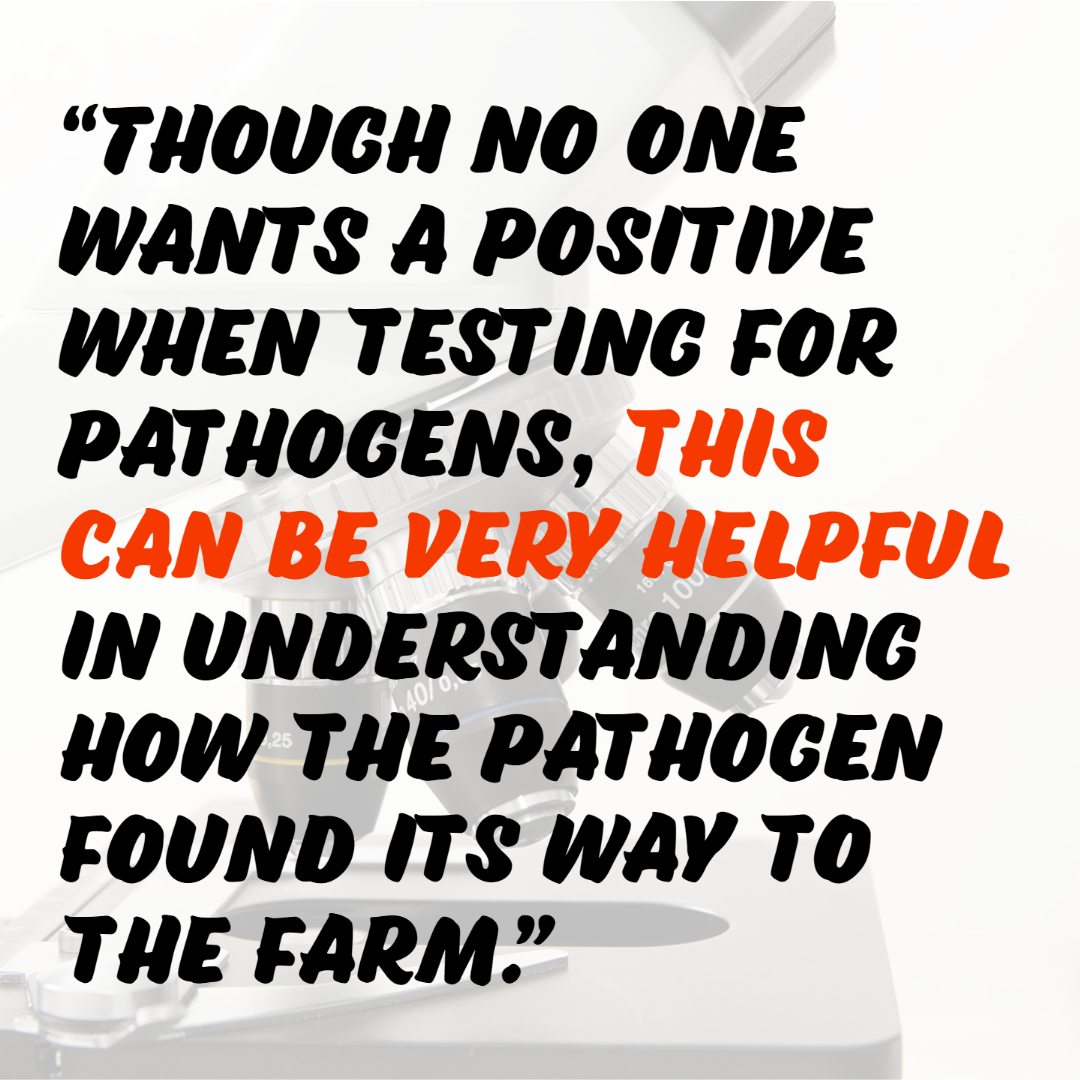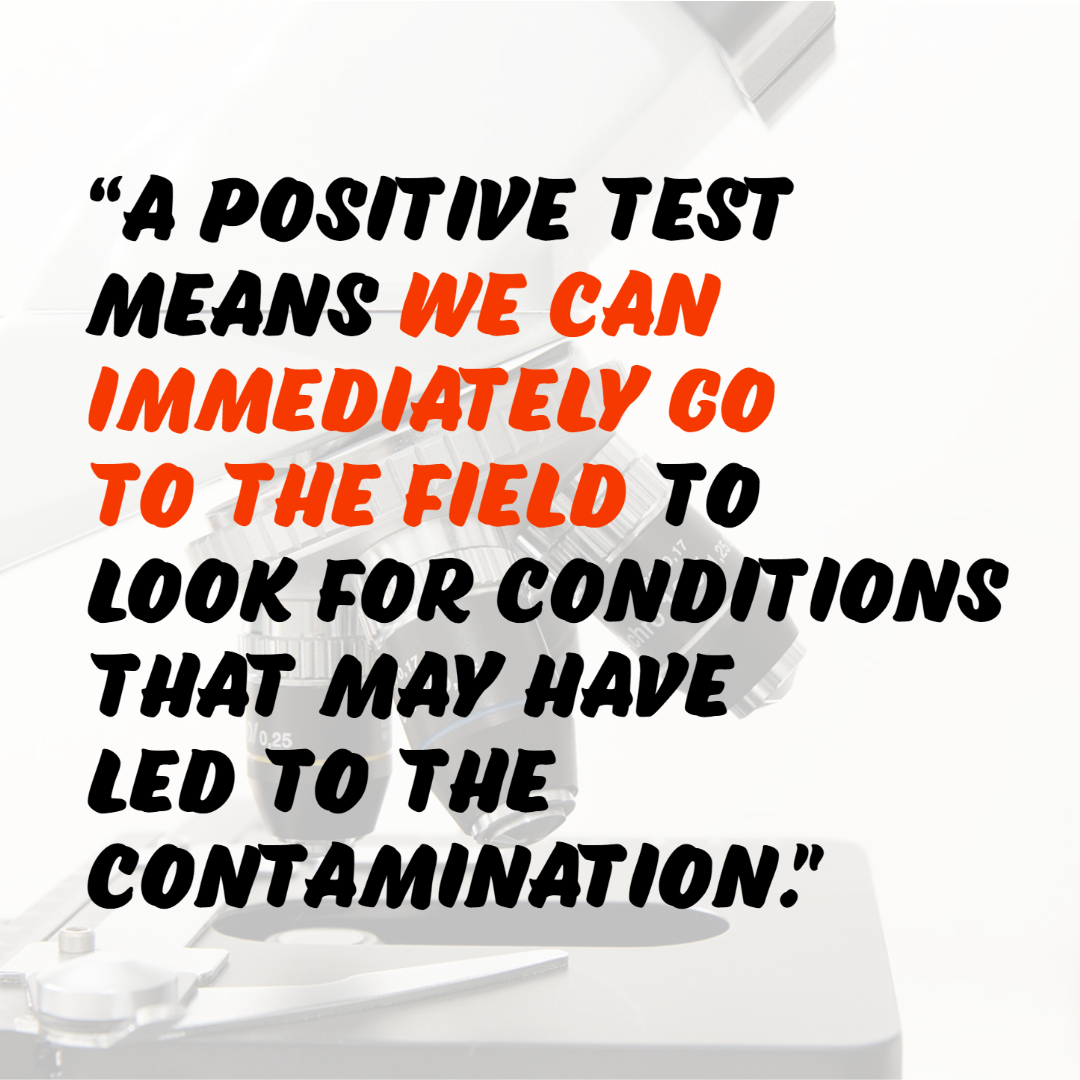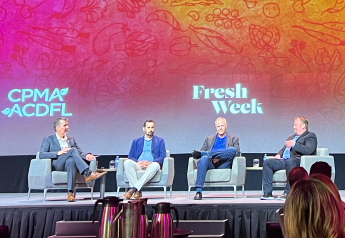Pathogen testing: A positive test can be a positive thing

Last month the U.S. Food and Drug Administration issued a report on findings of a sampling assignment that tested raw agricultural commodity romaine lettuce at facilities and on farms in the Salinas, Calif., and Yuma, Ariz., growing regions.
The testing took place over two growing seasons beginning in November 2019 and looked at over 270 samples for the presence of pathogenic E. coli and salmonella.
Importantly, the FDA did not detect any pathogens during the assignment.
Obviously, this is good news for the leafy greens industry and consumers. But at the same time, it’s frustrating. This FDA sampling program is just one of many, many efforts underway by government health officials, leafy greens producers, and academia to help stop outbreaks linked to lettuce and leafy greens.
Though no one wants a positive when testing for pathogens, when it happens this can be very helpful in understanding how the pathogen found its way to the farm. And that information is what will help us find real solutions.
In light of recent outbreaks believed to be associated with leafy greens products, we’re all working hard to find these solutions. It’s not just FDA investigators who are looking for pathogens. This past month, the LGMA conducted a survey to learn more about existing pre-harvest testing efforts being conducted voluntarily by our membership.

The survey indicates that 90% of LGMA members are conducting pre-harvest testing on a regular basis. In general, the tests are done from 4 to 7 days prior to harvest and are designed to look for E. coli and salmonella on the crop.
LGMA members participating in the study report the vast majority of test results have not come back positive. Importantly, all respondents report they have established procedures in place for dealing with positive test results. The most common procedures in place are destruction of implicated lots or “buffering” the field so that product from the area of the positive find is not harvested.
Most members are also conducting what’s called a “root cause analysis” when a test comes back positive. This action is meant to help them find out how the pathogen moved into the field to begin with.
In the next several months, the LGMA is going to be talking a lot about pre-harvest testing and root cause analysis. This is because we believe these two factors are important components to stopping future outbreaks.
It’s quite clear that product testing in and of itself isn’t enough to prevent outbreaks. FDA isn’t finding pathogens despite its comprehensive testing program. And yet, pathogens must be there because people continue to get sick.
Yes, testing is important, but it’s also not the proverbial silver bullet. That’s mostly because positive tests are extremely rare even when hundreds and hundreds of tests are conducted.

And yet the LGMA is becoming a very big proponent of product testing — particularly pre-harvest testing. Here’s why.
First, when a pre-harvest testing program is in place and a pathogen is detected, we can prevent the impacted product from entering marketing channels and potentially making people sick.
Second, and perhaps even more importantly, a positive test means we can immediately go to the field to look for conditions that may have led to the contamination.
This is so much more valuable than looking for answers after an outbreak has occurred. At this point, even if traceback efforts lead to a particular field — which it usually doesn’t — the field has almost always been long harvested and the crop plowed under. By then, it’s very hard to determine how product may have been contaminated.
The LGMA is very hopeful that a strong commitment to comprehensive pre-harvest testing coupled with requirements to conduct root cause analysis will provide valuable information and data. That’s one important component among many needed to help stop outbreaks.
Tim York is CEO of the California Leafy Greens Marketing Agreement.
More from Tim York:
Fear of flying and building trust
A food safety call to produce buyers
President Biden, ask your FDA leadership to visit a lettuce farm!







